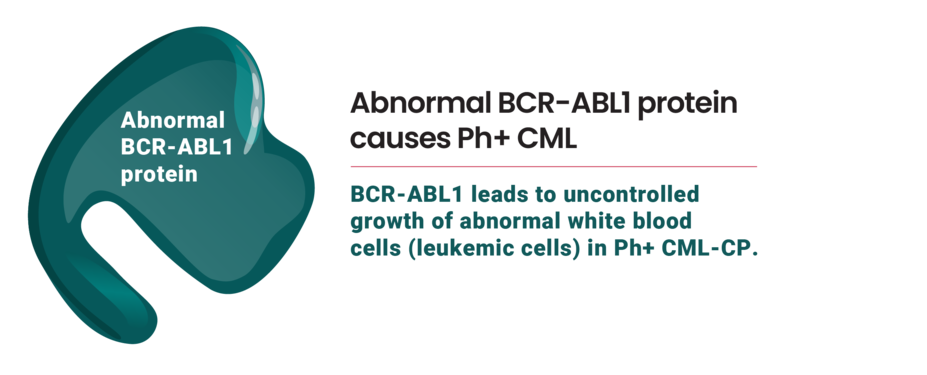
The more you know about Ph+ CML in chronic phase and its treatments, the more equipped you’ll be to navigate it
You didn’t choose this diagnosis, but you can help choose how to manage it. Your first treatment is an important decision. Here’s some information to better understand your condition and treatment options.
What is Ph+ CML in chronic phase? |
How many people have Ph+ CML?
In 2022, it was estimated that more than 74,000 people in the United States were living with chronic myeloid leukemia. In 2025, it was expected that more than 9,500 people in the United States would be newly diagnosed with the condition.
Symptoms of Ph+ CML
Some people experience feeling unusual tiredness, shortness of breath, fever, and bone pain. But these are not all the possible symptoms of Ph+ CML, so be sure to have an ongoing discussion with your health care team about how you're feeling.
The biology of Ph+ CML
Ph+ CML occurs when 2 chromosomes fuse abnormally, forming the atypical Philadelphia (Ph) chromosome, which creates an abnormal gene called BCR::ABL1.
In turn, this gene produces the abnormal BCR-ABL1 protein.
This protein causes abnormal white blood cells (also called "leukemic cells") to grow uncontrollably, crowding out healthy blood cells in the bloodstream. This increases the risk of infections and anemia, and can cause easy bruising and bleeding that takes longer to stop.
Treatments for Ph+ CML in chronic phase
Medications called tyrosine kinase inhibitors (TKIs) are approved for the treatment of newly diagnosed Ph+ CML in chronic phase. TKIs target the abnormal BCR-ABL1 protein that causes Ph+ CML.
Not all TKIs are the same—you may switch to a different TKI if your treatment goals aren’t reached or you experience unmanageable side effects.
SCEMBLIX can be your first treatment
SCEMBLIX is a prescription medicine used to treat adults with newly diagnosed or previously treated Ph+ CML in chronic phase.
It is not known if SCEMBLIX is safe and effective in children.
Ask your health care team if SCEMBLIX may be right for you.
Take an active role in your treatment plan Starting at diagnosis, partner with your health care team to find a treatment that is a good option for you. Make sure you understand your treatment goals and talk to your health care team about how to best manage your treatment plan.
For more information about Ph+ CML-CP and SCEMBLIX, and to contact advocacy groups, click here. |
Ph+ CML-CP, Philadelphia chromosome-positive chronic myeloid leukemia in chronic phase.
*SCEMBLIX was studied vs GLEEVEC® (imatinib), TASIGNA® (nilotinib), Sprycel ® (dasatinib), and Bosulif ® (bosutinib). Sprycel is a registered trademark of Bristol-Myers Squibb Company. Bosulif is a registered trademark of Pfizer Inc.

